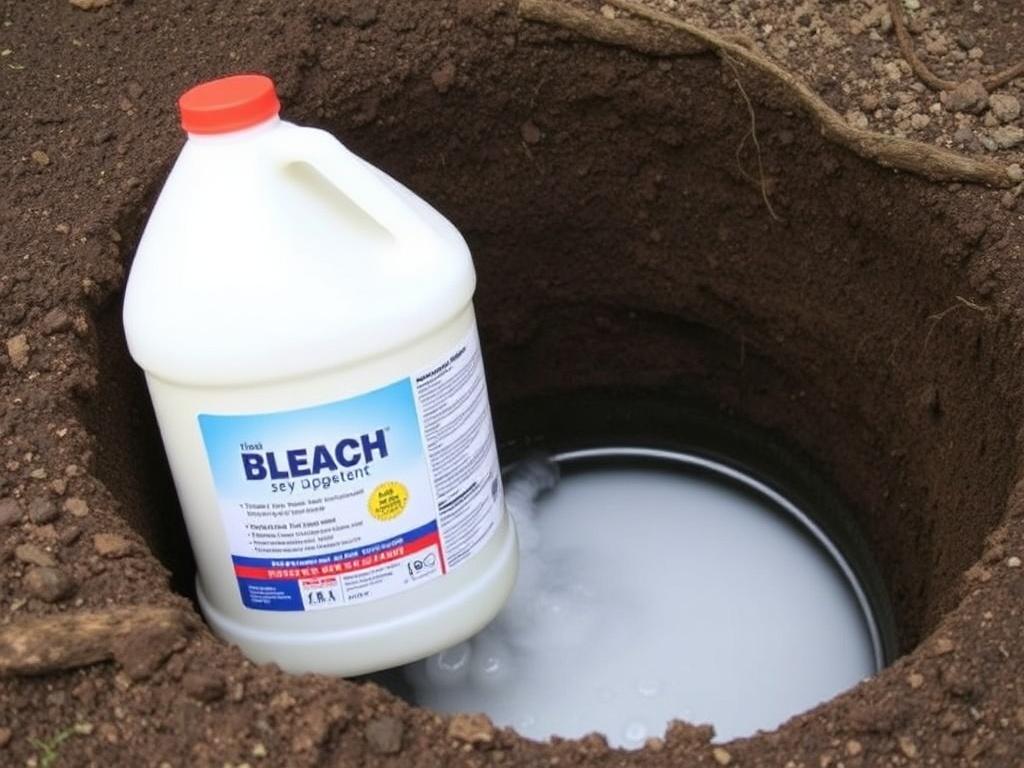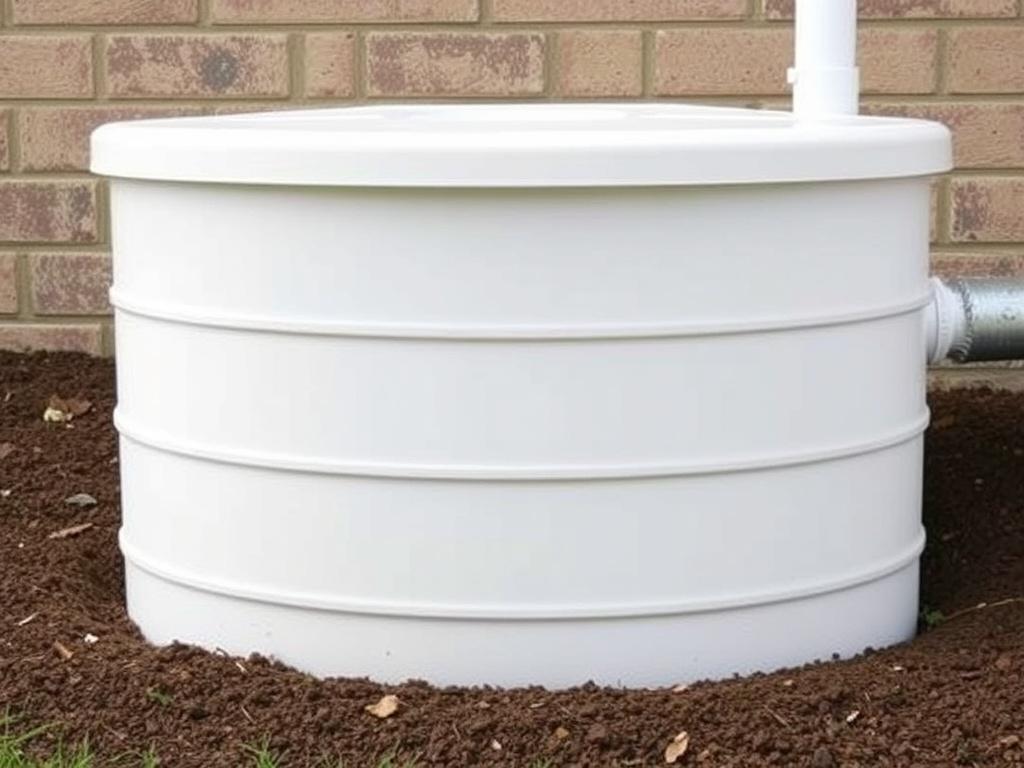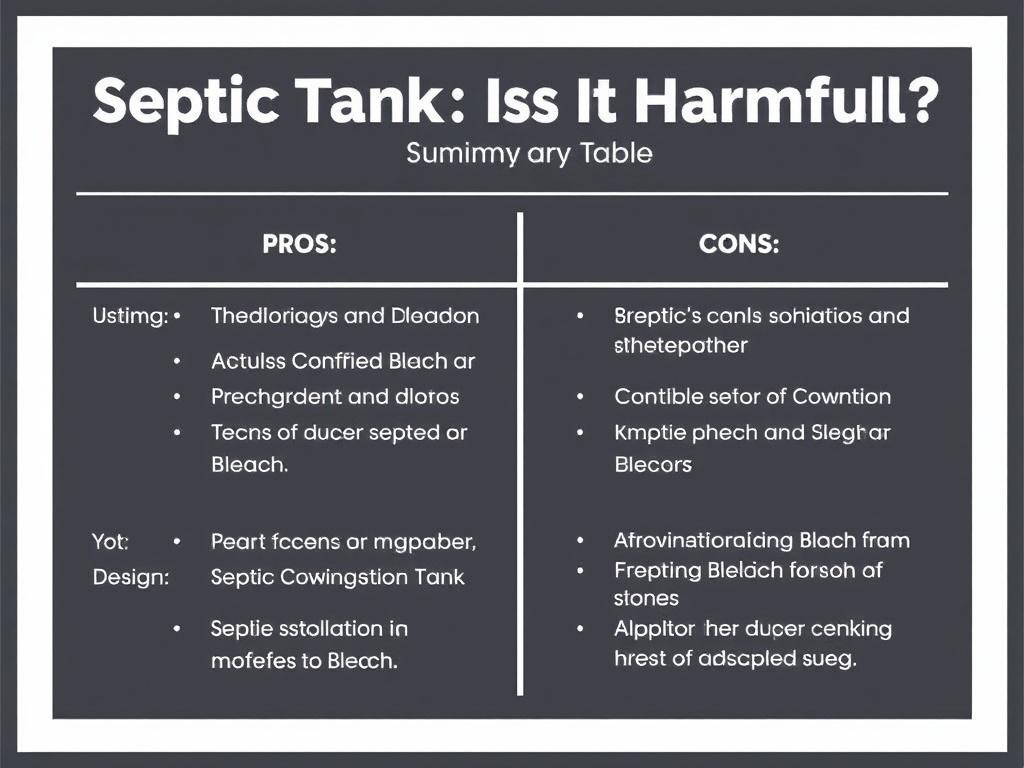When it comes to maintaining a septic tank, many homeowners often wonder about the products they use to keep their homes clean and sanitary. Bleach is a common household disinfectant known for its powerful cleaning abilities, and it’s used widely to kill germs, whiten laundry, and sanitize surfaces. However, there is often confusion and concern about whether bleach is harmful to a septic tank system. This article dives deep into the relationship between septic tanks and bleach, exploring if using bleach is harmful, how it affects the system, and what best practices you should follow to keep both your household and septic tank in good shape.
- What Is a Septic Tank and How Does It Work?
- Why Is Bacteria So Important in Septic Tanks?
- What Is Bleach and How Is It Used in Households?
- Is Bleach Harmful to Your Septic Tank?
- How Much Bleach Is Too Much for Your Septic System?
- Other Household Chemicals and Their Effect on Septic Tanks
- Tips for Using Bleach Safely with a Septic Tank
- Signs Your Septic Tank Might Be Affected by Bleach or Chemicals
- The Environmental Impact of Bleach on Septic Systems
- Septic-Safe Cleaning Alternatives to Bleach
- Summary Table: Pros and Cons of Using Bleach With a Septic Tank
- Conclusion
What Is a Septic Tank and How Does It Work?
A septic tank is an underground wastewater treatment system often used in homes not connected to municipal sewer systems. It’s a compact, self-contained unit that collects wastewater from your home—such as water from toilets, sinks, showers, and appliances—and separates solids from liquids through a natural settlement process. The solids settle at the bottom of the tank as sludge, while oils and lighter materials float to the top as scum. Meanwhile, the liquids, known as effluent, flow out to a drain field where they are further treated by soil filtration and microbial activity.
The success of a septic tank system hinges on a delicate balance of natural bacteria breaking down the waste. These helpful microbes digest the organic material in the sludge, preventing the tank from overflowing and reducing harmful substances before effluent is dispersed safely into the environment. When septic tank bacteria are healthy and abundant, the system can function efficiently for years.
Why Is Bacteria So Important in Septic Tanks?
The secret behind a well-functioning septic tank lies in the bacterial ecosystem inside it. These bacteria break down solid waste and convert it into less harmful substances that can be filtered through soil. This process reduces sludge buildup and prevents blockages. Without sufficient bacteria, waste accumulates more quickly, leading to costly pump-outs, backups, or even system failure.
Think of your septic tank as a miniature ecosystem. Just as plants need sunlight, water, and nutrients to thrive, the bacteria in your septic tank need the right conditions and inputs to do their job. Using harsh chemicals or antibacterial agents like bleach in large amounts might disrupt this ecosystem, harming the bacteria essential for waste breakdown.
What Is Bleach and How Is It Used in Households?
Bleach, particularly sodium hypochlorite bleach, is a strong, effective disinfectant commonly found in cleaning and laundry products. It is prized for its ability to kill bacteria, viruses, and fungi, making surfaces and fabrics hygienic. In households, bleach is used extensively:
- Disinfecting toilets, sinks, and bathroom surfaces
- Whitening clothes and removing stains
- Sanitizing kitchen counters and cutting boards
- Eliminating mold and mildew
- Cleaning drains and disposals
Though bleach helps maintain sanitary living spaces, its chemical potency raises questions about how it interacts with septic tank systems, where bacterial health is vital.
Is Bleach Harmful to Your Septic Tank?
The short answer is: it depends. Occasional, small amounts of bleach entering a septic tank generally won’t cause significant harm because the system is designed to handle some household chemicals diluted in the water flow. However, frequent or excessive use of bleach can upset the fragile bacterial balance inside the tank.
When bleach enters a septic tank, it kills bacteria—both harmful pathogens and beneficial microbes alike. A small quantity of bleach diluted by wastewater is often neutralized before it can do serious damage. But large volumes can significantly reduce or wipe out bacterial colonies, slowing or halting the decomposition process. Without enough bacteria to digest solids, sludge accumulates rapidly, leading to premature septic tank problems such as:
- Increased sludge buildup
- Drainfield clogging
- Backup of sewage into the home
- A foul odor around the septic system
- Costly repairs or replacement
How Much Bleach Is Too Much for Your Septic System?
It’s important to understand that the key factor isn’t just “bleach” but how much and how often it’s used. A few capfuls of bleach when cleaning a toilet or sink are unlikely to permanently harm bacterial populations, especially if balanced with care. On the other hand, pouring several gallons of bleach down the drain frequently or using it to clean the entire house can introduce harmful levels of toxic chemicals that disrupt bacterial activity significantly.
While there’s no universal measurement due to variations in septic tank size, usage, and bacterial health, septic professionals generally recommend limiting bleach usage and avoiding dumping concentrated bleach or other harsh chemicals directly into the septic system.
Other Household Chemicals and Their Effect on Septic Tanks

Bleach is just one of many household chemicals that can impact a septic system. It’s helpful to understand the general effect of these substances to practice mindful septic tank care.
| Chemical | Common Use | Effect on Septic Tank |
|---|---|---|
| Bleach | Cleaning, disinfecting, whitening | Kills beneficial bacteria in large quantities; diluted amounts usually okay |
| Ammonia | Cleaning, deodorizing | Toxic to bacteria; large quantities harmful |
| Drain Cleaners | Unclogging drains | Highly toxic; can kill bacteria and damage tank components |
| Antibacterial Soaps | Handwashing, cleaning | Can disrupt microbial balance if overused |
| Oil and Grease | Cooking, food waste | Can clog pipes and drainfields; reduce bacterial activity |
Understanding how different chemicals affect your septic tank helps you make better choices and protect your system from unnecessary damage.
Tips for Using Bleach Safely with a Septic Tank
Good news: you don’t need to give up using bleach entirely to protect your septic tank. By adopting careful practices, you can enjoy a clean home and care for your septic system at the same time. Here are some practical tips:
- Use bleach sparingly: Limit bleach usage to small amounts and only when necessary.
- Dilute the bleach: Mix bleach with plenty of water before pouring it down the drain.
- Alternate cleaning products: Use natural or septic-safe cleaning alternatives when possible.
- Maintain your septic system: Schedule regular inspections and pump-outs as recommended by professionals.
- Avoid dumping chemicals: Never pour large volumes of bleach or other strong chemicals directly into your drains.
- Use bacterial additives cautiously: Some septic additives can help maintain bacterial populations but consult a septic professional before use.
These small adjustments can make a big difference in preserving your septic tank’s health while keeping your home hygienic.
Signs Your Septic Tank Might Be Affected by Bleach or Chemicals
If you suspect that your septic tank bacteria have been harmed by bleach or other chemicals, look out for warning signs that indicate a failing system:
- Slow drains: Water takes longer than usual to drain from sinks, tubs, or toilets.
- Unpleasant odors: Sulfur or sewage smells near drains or around the septic tank area.
- Pooling water: Wet spots or puddles near the drainfield or septic tank that don’t dry up.
- Backups: Sewage or wastewater backing up into the home.
- Unhealthy grass patches: Lush green grass over the drainfield might signal leaking effluent.
If you notice any of these issues, it’s important to call a septic professional promptly to diagnose and address the problem before it worsens.
The Environmental Impact of Bleach on Septic Systems

Beyond individual home concerns, the use of bleach and chemicals has broader environmental implications. When septic tank bacteria are killed off by harsh chemicals, untreated or partially treated wastewater might enter the soil and groundwater. This can lead to contamination of local water supplies, negatively affecting ecosystems, wildlife, and community health.
Septic systems play an important role in natural water filtration and waste treatment. Preserving their functionality by limiting harmful chemicals like bleach helps protect the environment and water quality for everyone.
Septic-Safe Cleaning Alternatives to Bleach
If you’re worried about bleach harming your septic tank, there are plenty of septic-friendly cleaning options that are effective without being harsh:
- White vinegar: Natural disinfectant and deodorizer.
- Baking soda: Mild abrasive and deodorizer.
- Lemon juice: Natural bleach alternative and freshener.
- Castile soap: Gentle, biodegradable soap safe for septic systems.
- Hydrogen peroxide: Effective sanitizer when used in moderation.
Switching to these alternatives can maintain your home’s cleanliness without endangering septic tank health.
Summary Table: Pros and Cons of Using Bleach With a Septic Tank

| Pros | Cons |
|---|---|
|
|
Conclusion
In the great debate about septic tank and bleach, the ultimate takeaway is balance and moderation. While bleach is a powerful and useful cleaning agent, excessive use can harm the beneficial bacteria essential for your septic system’s health and efficiency. Small, diluted amounts of bleach are generally safe and won’t cause serious damage, but frequent or large volume use risks bacterial destruction, sludge accumulation, and costly repairs. To maintain a healthy septic system, consider limiting bleach use, opting for septic-safe cleaning alternatives, and regularly maintaining your septic tank with professional inspections and pumping. By making informed choices, you can ensure both your home stays clean and your septic system functions smoothly for years to come.
Помогла вам статья?






